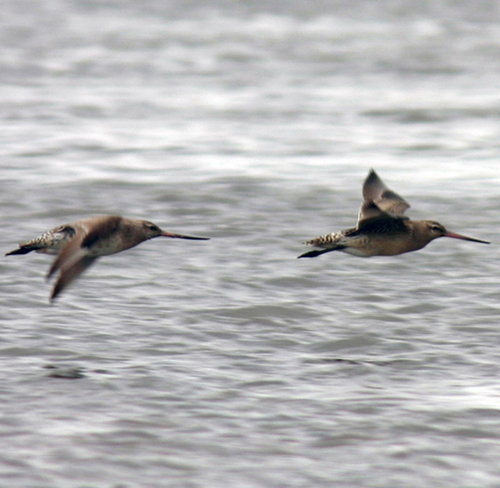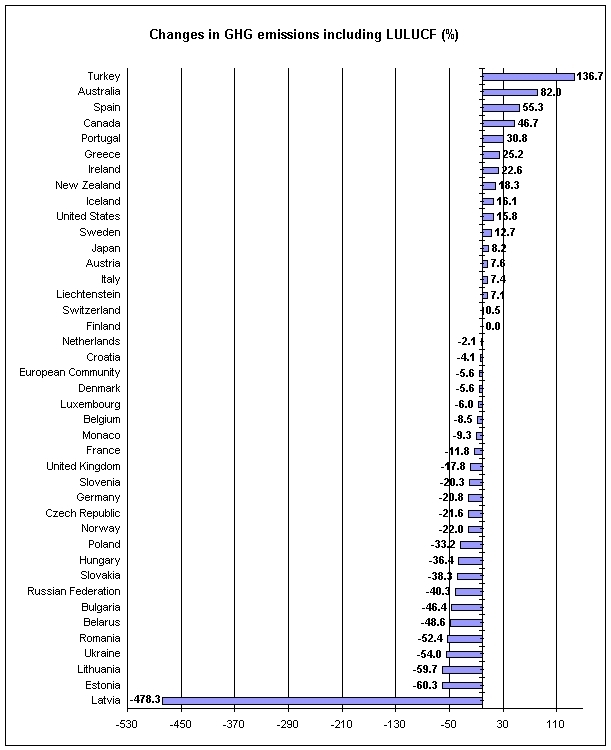Organic and Green (Bio) accommodation at
AMBER HOUSE - at the centre!™
Bed and Breakfast Guest House (B&B) in Nelson city centre - walk to Tahunanui Beach, Restaurants, Founders Park. Handy for
the 3 National Parks of Abel Tasman, Kahurangi and Nelson Lakes in the `Top of the South' Island of New Zealand
(NZ).

Join our growing list of tree sponsors
Our 1897 heritage homestay in Nelson, New Zealand recycles, composts and minimizes fossil fuel use.
Enthusiastic cyclists and nature lovers, we encourage our guests to be environmentally aware and minimise their own planetary impact.
We grow our own fruit, vegetables and herbs organically in the sunniest region of the newest inhabited land mass on earth.
For organic produce the Saturday market at nearby Montgomery Square is ideal. Award-winning restaurants and cafés are ten minutes stroll away.
All long distance buses (and the City Tour and
local buses) stop right outside Amber House.
On foot from the DOC Nelson Region Visitor's Centre: Exit the Centre.
Turn right and right again into Trafalgar Street.
Head north for 400m (towards SH6) and take the 4th turn right into Wainui Street which becomes Weka Street after 260m.
Nelson is New Zealand's sunniest city and the Nelson-Tasman region is a major fruit and vegetable growing area and the largest sustainable fishing port in the southern hemisphere - so much of our food does not have to travel far.
Nelson lies between the northern edge of the Southern Alps and Tasman Bay on the northern coast of the South Island and retains small town informality and friendliness.
Greener lodgings
Re-use, recycle
 • All kitchen scraps are composted. The compost is then added to our vegetable and flower gardens
• All kitchen scraps are composted. The compost is then added to our vegetable and flower gardens• Other waste is currently sorted into glass, paper/cardboard, plastic, cans in separate bins for separate collection to minimise landfill
• We grow organically our own herbs, strawberries, beans, peppers, carrots, cherry tomatoes, chok chok, silver beet, etc
• Where possible, items no longer required are donated to local good causes - we replace our linen and towels regularly and give the old ones away to the Salvation Army
Reduced fossil fuel use
• Nelson's great kite flying weather is good drying weather! We're lucky to be able to mostly dry all laundry on the clothes line. The electric drier is kept for emergencies only. Laundry smells fresher too!• We've installed the latest and most efficient Daikin heat pumps that will cool (or warm) rooms to the required temperature within a few minutes (making it unnecessary to leave appliances on when rooms are empty
 • We're installing the latest and most efficient
KÖMMERLING "Greenline" low emissivity, argon gas filled, double glazed windows - 8 units so far with more to follow
• We're installing the latest and most efficient
KÖMMERLING "Greenline" low emissivity, argon gas filled, double glazed windows - 8 units so far with more to follow• We've removed all hot water storage tanks. All water is heated on demand by LPG heaters. We would have liked to have used solar heating panels mounted behind a false Mansard roof but Nelson City Council's stupid height restrictions make this impossible while keeping the original appearance of our heritage home!
• We monitor energy consumption to decrease it where possible after evaluating and implementing energy saving practices; some of this can be very simple and obvious:
• Heated towel rails are switched off and guests encouraged to put their towels on the line first thing. (Even in the winter, Nelson's record-breaking sunshine hours and reliable afternoon sea breezed, means they're Usually bone dry in a few hours)
• Guests' towels are not changed daily except on request
• We switch lights and air conditioners off when we see rooms unoccupied
• Encouraging electric jugs to be filled with the amount of water appropriate to the number of cups intended rather than wastefully filled to the brim; typically 300ml per cup/mug
• TVs are not left on standby when the rooms are vacant
• Light bulbs have been changed to low energy compact fluorescent bulbs where fitments and purpose allows
• Appliances are cleaned and serviced regularly to ensure maximum efficiency
Water conservation
• Water saving practices are in place - we use a front loading washing machine and only operate the dishwasher and washing machines when full• All toilet cisterns are fitted with half flush buttons
• All sinks have plugs
• Showers available for each guest room
Minimising Waste
• Dispensers for toiletries (shampoo/ shower gel/soap) are planned for guest rooms. Single use items are not used to cut down on waste• We reduce the use of office consumables wherever possible, reuse paper when only used on one side, save electronic copies instead of paper ones
• Wherever possible items are purchased in bulk to reduce packaging.
• We strive to use local organic produce and prefer to buy 'New Zealand made' products
• Our children walk or cycle to school
I'm sure we can do better - any suggestions you may have would be most welcome!
Nelson Haven
 A few hundred meters to the North of Amber House is Nelson Haven, an important feeding and roosting area for waders, including Eastern
Bar-tailed Godwit, Banded Dotterel and Variable Oystercatcher.
A few hundred meters to the North of Amber House is Nelson Haven, an important feeding and roosting area for waders, including Eastern
Bar-tailed Godwit, Banded Dotterel and Variable Oystercatcher.
Four Nelson Bays Bar-tailed Godwits flew their way into the record books in March 2007 with non-stop flights of more than 10,000km from New Zealand to the Yellow Sea off the coast of Korea.
The Godwits, tracked by satellite transmitters, did not stop to eat or drink on the first leg of their northern migration - which usually ends in Alaska. No other animal shows such endurance.
The female birds took from 6 to 7 days to cover the route, flying up to 2km high at an average speed of 56 km/h and covering distances of 10,063km to 10,205km.
When the Godwits set out from New Zealand they are clinically obese, but they lose about half their body weight in each leg of the migration.
Upon arriving in the tidal flats of the Yellow Sea they land with drooping wings, have a big drink and then stay on for a month or two to refuel.
In September they will return, flying in a straight line across the Pacific Ocean from Alaska to the New Zealand coast.
Abel Tasman, Nelson Lakes and Kahurangi National Parks
Nelson is unique in being surrounded by no less than three National Parks and our region offers a lavish and beautiful variety of landscapes including some of the best beaches in New Zealand, the Abel Tasman National Park and Alpine terrain in both the Nelson Lakes and Kahurangi National Parks.
Nelson Lakes has the Rainbow Ski field and a 'mainland island' nature recovery project at Lake Rotoiti with great trout fishing.
Kahurangi National Park is enormous and populated by Nikau Palms (the worlds most southerly Palm tree) which makes this temperate area look tropical. Kahurangi contains New Zealand's most extensive forest stretching right up to the tops of the Mount Arthur Range. The Sumo wrestlers of the mollusc world, the carnivorous Powelliphanta superba prouseorum snails, slither through the ferns hunting giant earthworms. Weighing in at weights that a Hamburger would be proud of they can measure nearly nearly 4 inches (90mm) across and are yet another NZ evolutionary oddity. Kahurangi is variously interpreted as `treasured possession' or `precious jewel'.
Farewell Spit, the most northerly point of the South Island, is a long sandbar which stretches out 35km from the very tip of the South Island and is notorious for whale strandings and Israeli backpackers.
In the pristine Kahurangi National Park, a massive range of limestone has metamorphosed into hard marble containing the deepest dry cave systems in the Southern Hemisphere. At the base of these cave systems, lies the resurgence of the Pearse River whose crystal clear waters erupt from the base of the mountains.
On Wednesday, 21 March 2007, a team of international cave divers set a new record by diving to a depth of 177m (more than 580 feet below ground level) in the Pearse Resurgence near Mount Arthur.
The record depth was reached after the team spent 10 days diving in this amazing cave system located about 40 miles west of Amber House.
A spokesman for the group said that diving in the Pearse system was fantastic as the caves were so large it wasn't claustrophobic.
"It's like diving down a railway tunnel. The water is actually gin clear, it's like you are not in water - it's like being in air."
The spokesman said it took Rick Stanton of England about 20 minutes to get down to 170m. However, the ascent took six hours as it had to be done slowly to allow for decompression with the divers using special "rebreather" tanks (allowing them to stay underwater for up to eight hours) and wearing heated vests and thick thermal clothing under their dry-suits to stay warm. There were problems with lights imploding because of the extreme depths.
Another member of the team, Mr Harris, said diving in the Pearse was completely different from other cave dives he had done.
"This cave is particularly spectacular because of the size of its passages and the clarity of the water. But the cold makes it a pretty forbidding place as well."
The Mount Arthur range had large, dry cave systems and the next challenge was to find a link from the Pearse Resurgence into other systems in the area, he said.
Cycling
 More people cycle to work in Nelson (5.5%) than in New Zealand generally (1.9%) according to the 2006 census.
More people cycle to work in Nelson (5.5%) than in New Zealand generally (1.9%) according to the 2006 census.
The whole Nelson region tries to maximise cycling opportunities, as this excerpt from the Nelson Mail indicates:-
"Nelson police are donning their bike shorts to kick off what is thought to be the country's first bicycle bobby patrols."
Four specially designed bicycles, in police livery with lights and sirens mounted on the handlebars, have hit Nelson's streets.
The riders will have special uniforms, the shorts have arrived, and helmets are also decked out in police livery.
After falling out of favour for many years, police bicycle patrols are now
common in urban areas overseas, where among other advantages, they make officers more approachable to the public.
Senior Sergeant Tony Bernards said the idea initially arose in response to the high number of cycle crashes in the Nelson area, which because of its great
weather, wonderful scenery and many level cycle paths, had more cyclists than other New Zealand regions.
He did not think police were getting as involved as they could be, and looked overseas, where many forces have 24-hour bike cop patrols, for inspiration.
"If I had my way, I would probably have guys on rollerblades going around the waterfront if that got us closer to the public and got us talking to them a wee
bit more," he said.
The idea of a bike patrol was popular, and 17 officers volunteered to get on their bikes.
Funding for the bikes came from government agencies.
The special lights and sirens can be ordered from the United States for about $US300 ($NZ520), but police had rigged their own up for about a 20th of the cost.
The siren was more like an air horn than those found in police cars, and would definitely grab people's attention.
Seven officers have been through the required training and two are expected to be out on their bikes in the Nelson area at any given time.
Police involved with school groups on bicycles had already nabbed two offenders - in one case a policeman had been able to come up on a drug dealer without him hearing, and a shoplifter had been chased.
A spokesman for police national headquarters said it appeared the bikes unit was the only one of its type in the country. It was a Tasman district initiative and other districts were free to adopt it if they felt it was appropriate.
Greenwash?
False Environmental Claims by NZ?
 In the last century, most countries joined an international treaty - the
United Nations Framework Convention on Climate Change (UNFCCC) - to begin to consider what can be done to reduce global warming and to cope with whatever
temperature increases are inevitable. Later, on 11 December 1997, The
Kyoto Protocol, an addition to the treaty, was adopted in
Kyoto, Japan by a number of nations. This Kyoto Protocol has more powerful (and legally binding) measures.
In the last century, most countries joined an international treaty - the
United Nations Framework Convention on Climate Change (UNFCCC) - to begin to consider what can be done to reduce global warming and to cope with whatever
temperature increases are inevitable. Later, on 11 December 1997, The
Kyoto Protocol, an addition to the treaty, was adopted in
Kyoto, Japan by a number of nations. This Kyoto Protocol has more powerful (and legally binding) measures.
The major feature of the Kyoto Protocol is that it sets binding targets for 37 industrialized countries and the European Union for reducing greenhouse gas (GHG) emissions. These amount to an average of five per cent against 1990 levels over the five-year period 2008 to 2012.
The major distinction between the Protocol and the Convention is that, while the Convention encouraged industrialised countries to stabilize GHG emissions, the Protocol commits them to do so.
Recognizing that developed countries are principally responsible for the current high levels of GHG emissions in the atmosphere as a result of more than 150 years of industrial activity, the Protocol places a heavier burden on developed nations under the principle of “common but differentiated responsibilities.”
The Kyoto Protocol entered into force on 16 February 2005. 184 Parties of the Convention have ratified its Protocol to date. The detailed rules for the implementation of the Protocol were adopted at COP 7 in Marrakesh in 2001, and are called the “Marrakesh Accords.”
Most people know that the US and Australia reneged on their Kyoto promises shortly after signing. Less well known is that both Canada and Ireland, neither of which reneged, both succeeded in increasing their emissions by more than Uncle Sam but still display no signs of contrition or of even being called to account by the other signatories.
Now the Guardian (a British left-wing newspaper) columnist Fred Pearce has allocated the "prize for the most shameless two fingers to the global community" to New Zealand, "a country that sells itself round the world as `clean and green'.
"New Zealand secured a generous Kyoto target, which simply required it not to increase its emissions between 1990 and 2010. But the latest UN statistics show its emissions of greenhouse gases up by 22%, or a whopping 39% if you look at emissions from fuel burning alone.
"Some countries with big emissions growth started from a low figure in 1990. Arguably, they were playing catchup. There is no such excuse for New Zealand. Its emissions started high and went higher.
"They are today 60% higher than those of Britain, per head of population. Among industrialised nations, they are only exceeded by Canada, the US, Australia and Luxembourg".
Nelson's very own MP and Minister for Climate Change Issues, Nick Smith, has a
reputation for being frank and truthful to the point of giving offence (a rare and endearing quality in a professional politician) and fronted up as follows
on the National Party website:
"The rhetoric of New Zealand being a world leader on climate change has been at odds with a trebling in coal-generated electricity, record felling of trees,
and large increases in our gross emissions over the past decade.
"We have had to give New Zealand's climate change policy a reality check. We are not claiming New Zealand can be a world leader in emissions cuts or the first carbon-neutral country in the world. Our policy is for New Zealand to do its fair share and this will be challenging given our unique emission profile dominated by agriculture.
"We are about less talk and more action. That is why we've advanced policies to insulate 180,000 homes, encouraged solar water heating, funded bio-fuel development, exempted electric cars from road user charges and facilitated renewable energy projects.
"New Zealand does need to get on and implement an emissions trading scheme that encourages energy efficiency and afforestation. The debate on an ETS has raged for more than a decade and we need to make a start"
Postscript: Reader comments on the Guardian's website have included:
"Auckland City (half the population live there) has a lot to answer for in terms of emissions. Terrible public transport means you can't plausibly survive there without a car."
"NZ is a car-infested, alcohol-sodden hell hole with appalling levels of domestic violence. Cyclists are demonised with ludicrous helmet laws."
AMBER HOUSE - at the centre!™
is proud to rely on

for our Property Management System
AMBER HOUSE - at the centre!™ is a trademark used under licence by Amber House Limited.
Webpage version 50f, 13 January 2010



